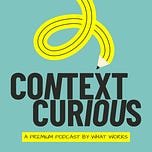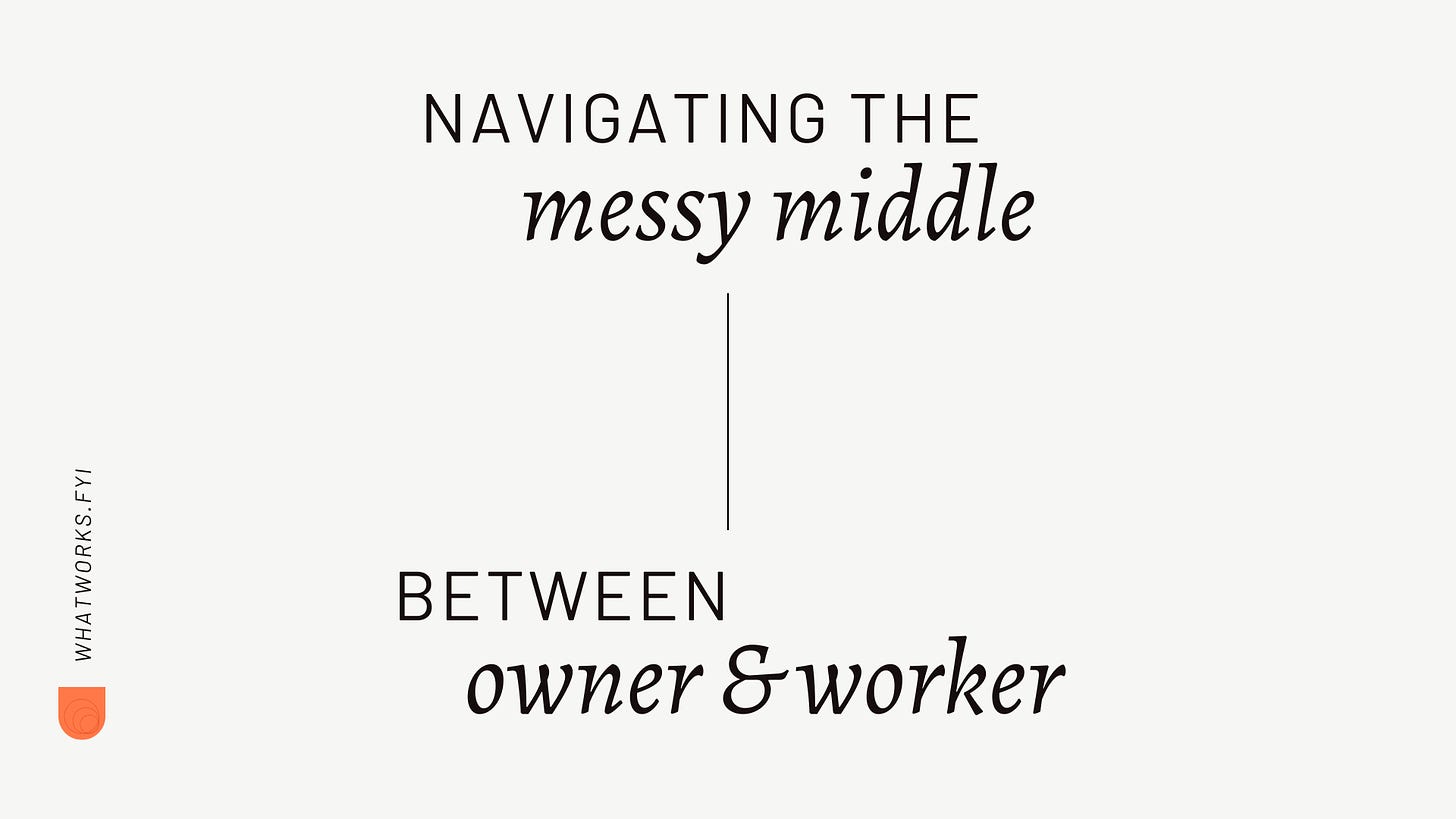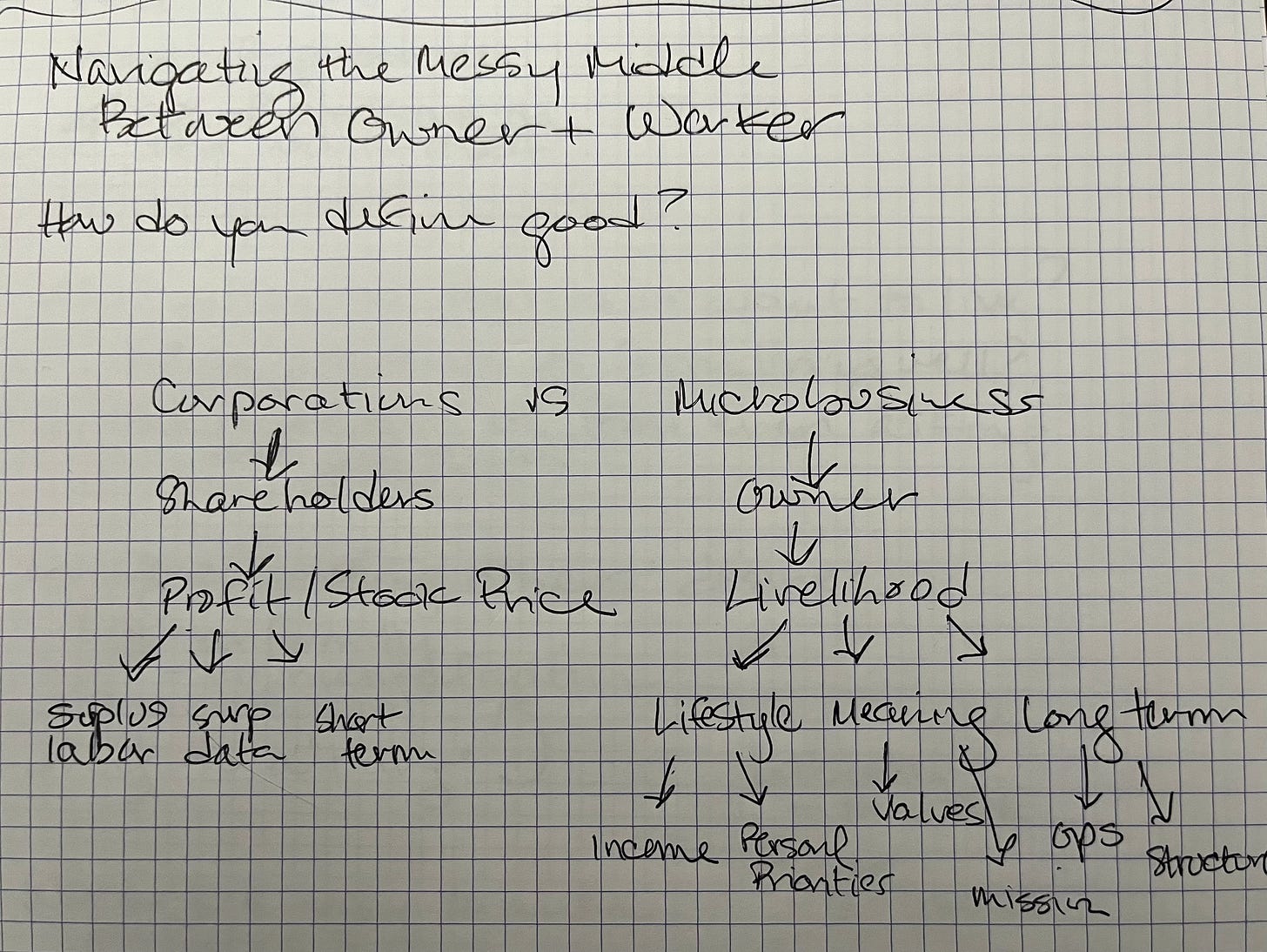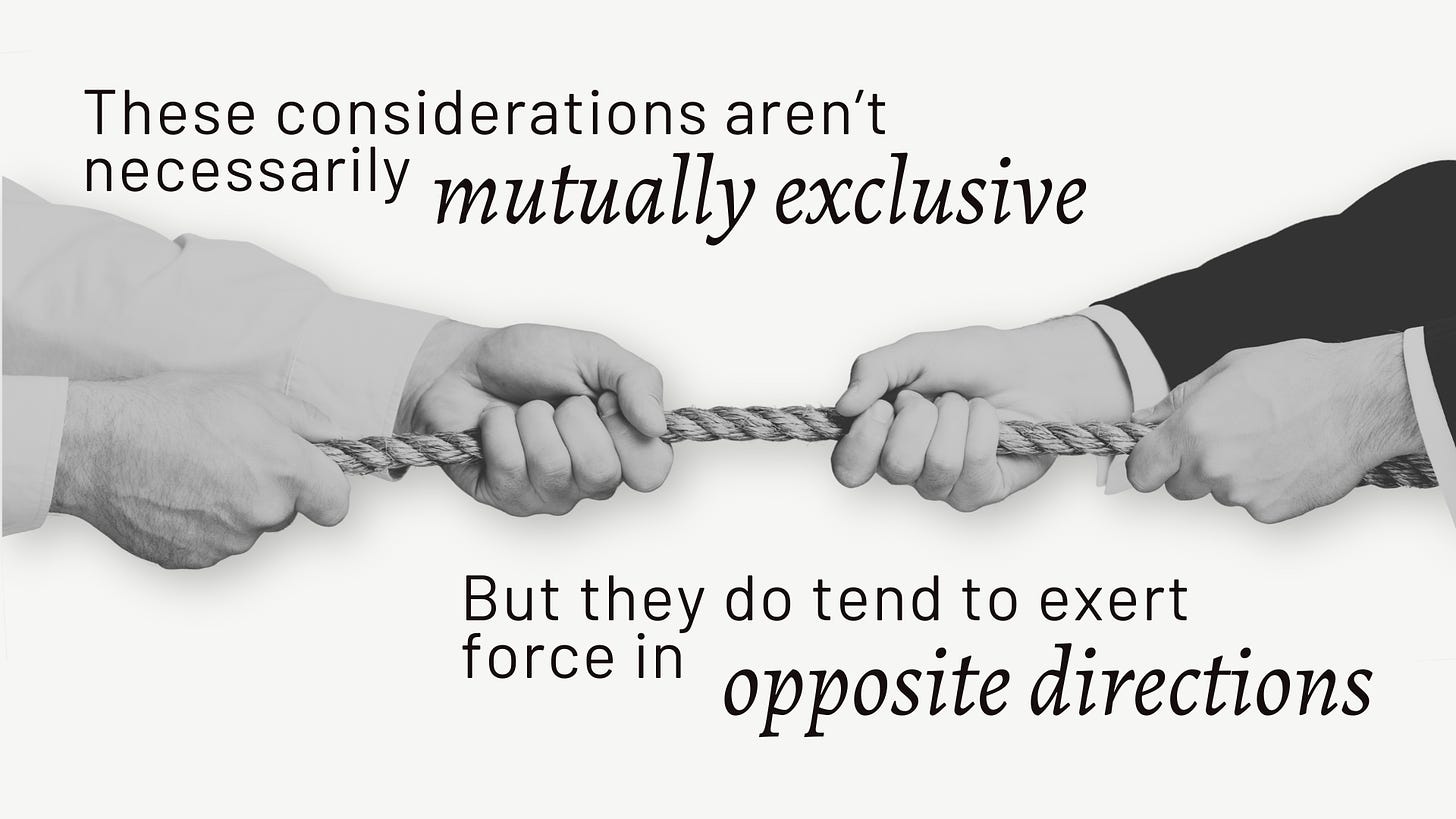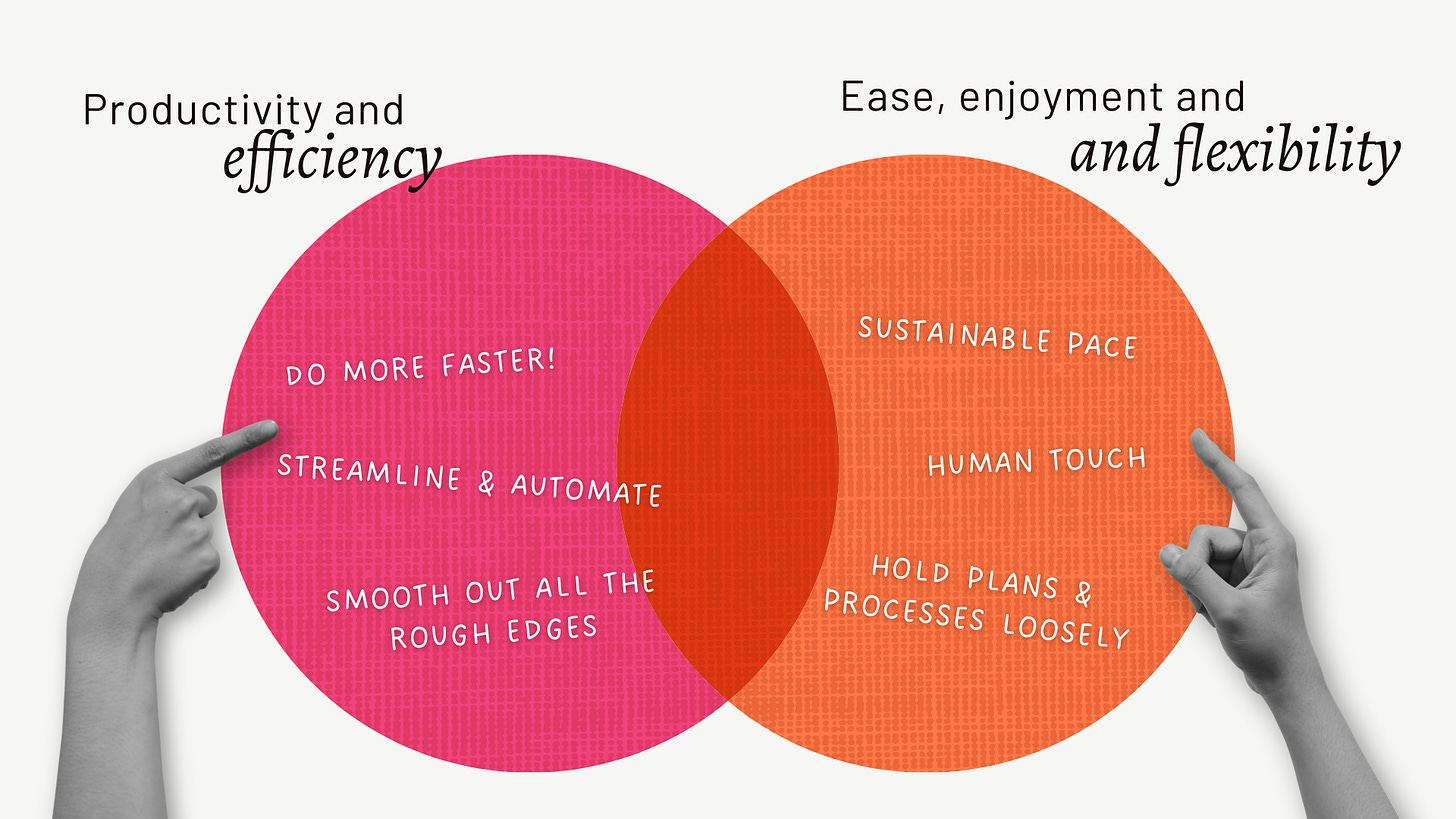This is the 13th edition of This is Not Advice, a “not advice” column exclusively for premium subscribers. To get access to the full column plus the whole premium archive, upgrade your subscription for just $7 per month.
Last week, I gave a talk on the tension between our owner selves and our worker selves. I’m pretty happy with the way it came together, but I struggled to make it work. I had limited time on stage, limited knowledge of the audience, and quite a bit I wanted to say.
In the initial conversation I had with event organizers, we talked about how likely attendees felt many conflicting priorities given the current economic environment. I had recently published my article on why “the economy” doesn’t mean much when it comes to the needs and well-being of small business owners and independent workers. And I suggested that I hit similar themes but with a broader message that would apply no matter which way the economic winds were blowing. Hence, talking about the tension between our owner selves and our worker selves.
When I'm thinking about this kind of talk, I tend to structure it into 3 basic parts.
The first is a specific challenge that the audience is dealing with. The second is a mental model that I can use to elucidate that challenge. And third, a broader application that helps people use that mental model in a variety of circumstances.1
The specific challenge is what the organizers told me their attendees were dealing with (i.e., conflicting priorities). That connected to a mental model that I had for why conflicting priorities happen (i.e., how economic factors impact workers differently than owners). Then, I used that mental model to bridge to a broader application (i.e., how running a small business creates considerations that exert opposing forces).
That’s how I came up with the original presentation topic and title: “Navigating the messy middle between owner and worker.”
But when I sat down to start outlining what I wanted to say and how I wanted to build out the talk, I realized that there were, oh, about six mental models that I could use to talk about the difference between owners and workers. First, I eliminated a couple of models that would typically be my go-to concepts because I didn’t want to be written off as a Radical Leftist. I don’t have a problem with being identified as a Radical Leftist, of course. But I knew that if I could explain the issue without using the vocabulary of Marxism and class struggle, I could get everyone on board, regardless of how they’d identify themselves politically.
Next, I tried out a mental model where I’d explain how the different values and incentives within a corporate structure are different from the values and incentives within a small business structure. I made diagrams! I was on to something! But, for as useful as that mental model might be, I realized that I couldn’t use it to structure a 30- to 45-minute talk. There were just too many steps between the acute experience of the problem and the mental model I wanted to share to think about.
All throughout this initial phase, I made slides.2 I’ve learned that while I don’t think of myself as a visual thinker, starting to turn concepts into visualizations early helps me properly scope and argue a talk. I noticed that the word “tension” seemed fruitful in terms of visual language. I grabbed a picture of two pairs of hands pulling on a rope, tug-of-war style. I put that image into the middle of the slide after one in which I briefly outlined how owner priorities differ from worker priorities. In the top left corner of the tug-of-war slide, I wrote: “These considerations aren’t necessarily mutually exclusive…” And in the bottom right corner, I wrote: “But they do tend to exert force in opposite directions.”
At that point, I realized I had overcomplicated the whole thing.
Honestly, any decent talk that I give has a moment where I’ve realized I’ve overcomplicated things and need to go back to the drawing board! The not-so-decent talks are the ones in which I don't realize I've overcomplicated things.
That tension—being pulled in opposite directions—spoke directly to the difficulty I knew everyone in the room would have experience with. It was a simple and effective mental model for the problem. Of course, that mental model didn’t have anything to say about the solution. So I needed to keep going.
As I continued to work through what I wanted to say, I recognized that the next step in the model would be to use a Venn diagram. The circle on the left was owner priorities. The circle on the right was worker priorities. I left the overlap intentionally blank to (hopefully) show that there isn’t some “right answer” for how these two sets of priorities overlap. Simply that there is room for us to play in the middle.
From there, I needed one more mental model to provide the takeaway. This one came easily: a gauge. I wanted to show that when we recognize the various forces creating the tension between our owner selves and our workers selves, we can adjust the pressure. Sometimes, we need to consider what are more owner-type priorities. Other times, we need to consider more worker-type priorities. But a gauge isn’t locked in one position, right? It remains responsive to our needs and goals, adjusting the pressure accordingly.
The other day,
, a brilliant finance and economics communicator, described her project this way:The goal is to give people tools to understand the world around them.
This is my goal, too.



